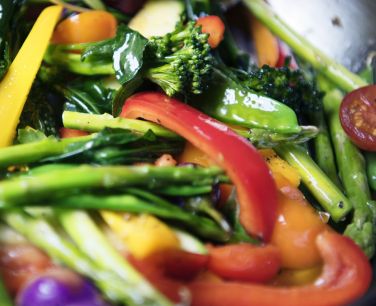Children with diabetes face similar food challenges as everyone else – namely, maintaining healthy eating habits over time. All children need to eat regular meals to promote good overall health, normal growth and a healthy weight. Indeed, your whole family can eat the same healthy meals together.

With so many temptations, it is difficult to always go with the healthy options and, of course, it’s important to prepare food that your child enjoys. Try tailoring meal plans to your child’s food preferences and eating habits.
Although kids with diabetes do not have to follow a special diabetic diet, they do need to:
- Be more aware of the time and amount of food intake.
- Eat foods that help maintain the levels of lipids in the blood (fats like cholesterol and triglycerides) within in a healthy range.
- Eating a healthy balanced diet can prevent some of the long-term health problems caused by diabetes.
When you are planning and preparing meals for your child, it is important to know what is in the foods you are serving and eating. It is easy to guess what some foods contain, but others can be more challenging. That is why food labels are important.
Food labels
Food labels list the ingredients, nutritional information and calories contained in the food. Apart from specific considerations for children with diabetes, parents might check food labels for the same reasons they do for themselves or other children. For example, watching calorie intake can help to maintain a healthy weight. It is also important to ensure your family is getting enough vitamins, minerals and fibre.
Carbohydrates
Regardless of the specific meal plan recommended by your child’s doctor, it is important to be aware of the carbohydrates in food. This way, you can learn to make a good balance between carbohydrate intake, activity levels and insulin, and achieve an optimum control over your child’s diabetes.
It is important to look for carbohydrate levels on food labels, as carbohydrates can have an impact on your child’s blood glucose levels. Usually, carbohydrates are clearly labelled in grams on food packaging. Carbohydrates mainly occur in two forms: sugars and starches, which include:
- Fructose – sugar found in fruit and some baked goods
- Glucose – the main sugar found in our bodies, which is also found in foods like cakes, cookies and soft drinks
- Lactose – sugar found in milk and yogurt products
- Starches – potatoes, corn and peas; grains, rice and cereals; and breads
You can figure out your child’s carbohydrate intake by comparing the serving size with the amount of carbohydrates per serving on the food label. You can then determine how many servings your child eats. Here’s an example:
- Serving size: 1/3 cup
- Carbohydrates per serving: 5g
- Amount of food eaten: 1 cup
- Grams of carbohydrates eaten: 15g (5g per serving x 3 servings)
The recommended carbohydrate intake varies from child to child and can even differ in the same child from day to day. Various factors can also affect the required daily intake such as age, size, weight goal, exercise level, medication and other medical issues.
Sodium
It is also useful to be aware of the sodium (salt) content of foods. The amount is usually listed on the food labels. There has been evidence showing the relationship between a high salt diet and the development of high blood pressure. Children who have diabetes with hypertension should take special note of this. They should minimize salt intake and limit it within the levels recommended by the doctor. This can minimize the risk of developing high blood pressure. Even if you do not have hypertension, it is still a wise choice to use less salt.
Fats
It is important to pay attention to the amount and type of fat that foods contain. Saturated fats, cholesterol and trans-fats are all contributors to the development of cardiovascular diseases. Diabetic children who have abnormal level of lipids(fats) in their blood have a greater risk of developing heart diseases. Discuss what kind of limits you may need to set on your child’s intake of fats with the doctor.
Meal planning
Each meal should provide a good balance of carbohydrates and other nutrients, both for diabetes management and to make meals satisfying. Here are some estimates to aim for over the course of a day:
| Nutrients | Portion (% of calories) | Remarks |
| Protein | 10-20 | Sources: lean meat such as chicken and beef |
| Fat | 25-30 | Should avoid food with lots of trans and saturated fat |
| Carbohydrates | 50-60 | Source: Green and orange vegetable such as carrots and broccoli. Should choose brown rice and sweet potatoes instead of white rice and potatoes. |
Meal planning guidelines for you and your child can be obtained from your diabetes nurse and nutritionist. They may ask your child to make a diet record for 3 days. Base on your child’s record, they can have a better idea of your child’s preferences and eating habit. A tailor-made meal plan can be designed to accustom your child’s taste and health.





